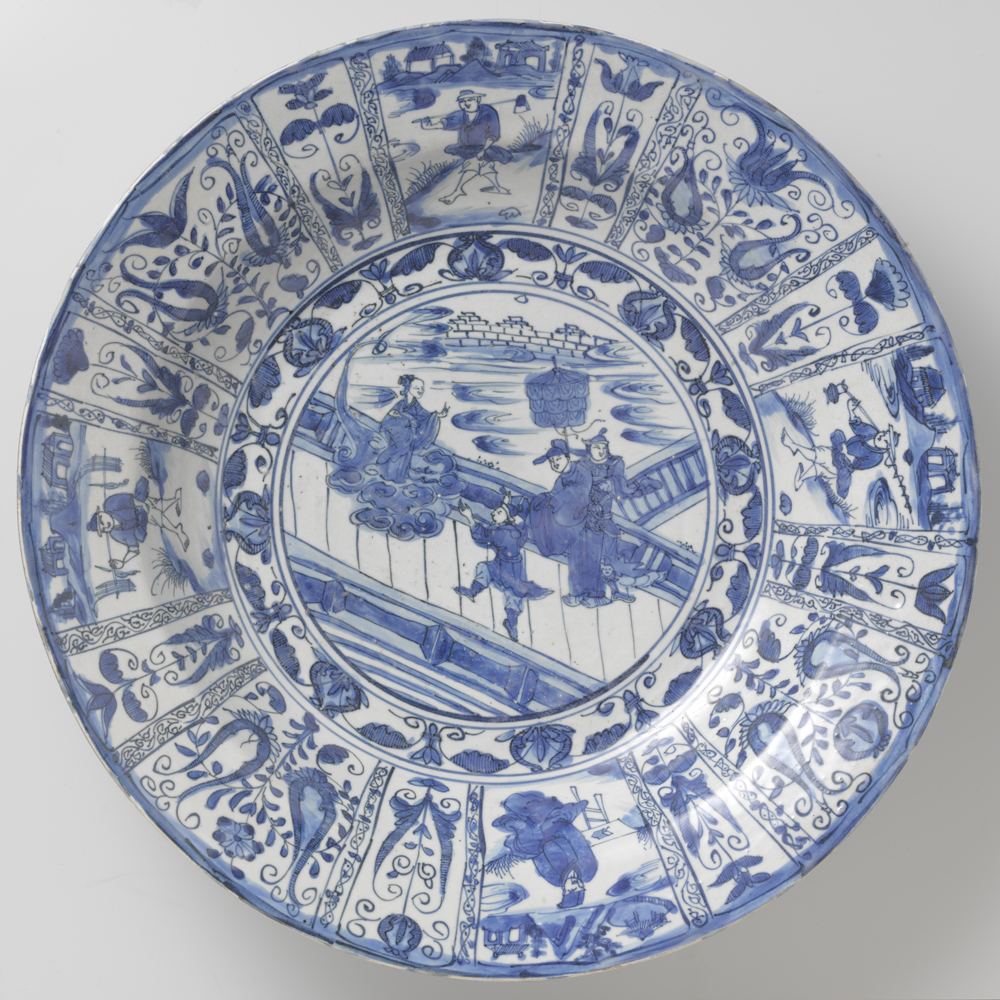Stop 6 - Trade Ceramics
This showcase shows 700 years of ceramic production in the Indian Ocean. The Chinese began the development of porcelain towards the end of the Later Han dynasty (between the 1st and 2nd century in the Common Era). The green bowl is called celadon ware and was favoured by the Chinese Imperial Court before being replaced by painted wares especially the new blue and white porcelain, under the Yuan dynasty in the 13th and 14th centuries. Cobalt imported from Iran was used to decorate porcelain as an underglaze, which produced a rich blue design when fired. You can see this colour in the Kashan fish bowl.
The large dish at the far left is a type of Chinese export porcelain called Kraak. It was among the first Chinese export ware to arrive in Europe in mass quantities, and is named after the Portuguese ships or Carracks, in which it was transported. Kraak is often decorated with variations of the more traditional motifs found on Chinese porcelain.
The blue and white covered bowl and jars are regional variations of the blue and white style from Thailand and Vietnam.
By the 18th century Blue and white was being produced in Europe. Look at the European rural scenes on the tile fragments produced in Delft in the Netherlands and the ‘Willow Pattern' saucer which was a composite of Chinese motifs as imagined by British manufacturers. The Willow pattern has been applied using transfer printing where inked tissue taken from an engraved plate could be used to decorate quantities of china with detailed designs at a fraction of the labor and expense of hand-painting.
Traditional Chinese landscape designs are known as shan shui which means “hills and streams” but also included boats, trees, birds, pagodas, houses, and pavilions. The tea caddy from the wreck of the Zeewijk is an example of the fine Chinese blue and white being produced for export in the 18th century. The platter on display, however, is a nineteenth century version of this pattern and it shows an obvious decline in the quality and intricacy of these pieces.
The imitation of designs goes both ways. Have a look at the large storage jar or martavan at the back of the showcase. This is clearly an Asian form but if you look closely you can see an embossed European face on the front.

- Next Stop
-

Stop 7 - Trade Beads
next